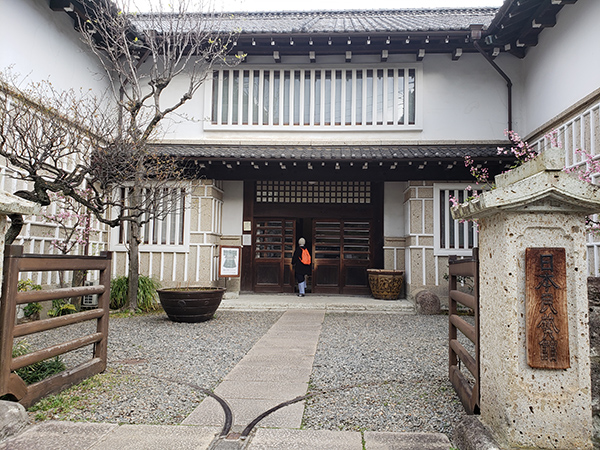
2019 4 16
Sunshine Lee's Culture Essay
'Folk Arts' of Yanagi Muneyoshi
I’ve always wanted to visit Japan Folk Crafts Museum in Tokyo. It was in 2013 when I learned of Yanagi Muneyoshi 1889-1961. I had stepped into an exhibition of his collections at National Museum of Modern and Contemporary Art, Korea. I had heard of him, yet that was the first time I actually came across the beauty of his collections.
It was a fresh surprise. His collections included ordinary crafts like pottery, bowls, combs, and spools that no one really cared back then – not the classy pottery like white porcelain or celadon porcelain. They were not perfect, yet they were so lovely that they made me smile. I could feel his pioneering eye for beauty. What was more surprising was that Yanagi Muneyoshi, having seen the artistic value of the ordinary crafts of Joseon, came to revere the country and the people that created those things.
There was no name or concept like 'folk arts' then, he came up with that concept and tried leading the creation of tomorrow through the value of ordinary things used in the area he lived. He was impressed with 'line' of Joseon such as pottery, gat(Korean traditional hat), shoes, skirts, mountains, and ridge, he felt the ‘the sadness permeating Joseon’s beauty’ and dubbed it the 'Beauty of Sorrow' and made it known to the world.
He was worried that our superior culture might disappear – and determined to build an art museum on behalf of us.
The purpose of founding a Korean art museum was not just to display artifacts; as he wrote, he hoped that Joseon People’s Museum would be a driving force for the continuance and rebirth of Korean art.
I remembered his hopes, and once watched his story in NHK TV. And Now finally I got to visit his Folk Crafts Museum near Tokyo University.
He coined the term ‘folk arts’ to disseminate a new concept of beauty he encountered through nameless artisans’ folk crafts. He built Japan Folk Crafts Museum at Tokyo in 1936, made it a stronghold of folk arts movement supporting ‘Making Beauty a part of life’ and did many activities including holding an exhibition, collecting, studying and writing.
Japan Folk Crafts Museum was a two-story building which had something out of the common. Various everyday crafts that he chose were on display on both floors. Among Japanese crafts could be found some from Joseon. Those that were too common that we threw away were beautiful in his eyes and became his collections, he chose with a consistent perspective that are outstanding and objective, and it’s loved by people from all over the world. People from all over the world come to Tokyo to see things that we threw away but Yanagi Muneyoshi collected and marvel at them.
After coming back to Korea, I browse furniture and pottery used by both royals and common people in MMCA and realize anew how noteworthy, humane and heart warming ordinary crafts that Yanagi Muneyoshi collected are.
I guess his delicate discerning eye and heart looking at the world with a beautiful eye made it possible for him to capture beauty in ordinary things, and I wonder where that kind of aesthetic sense comes from.
I feel this all the more, as teaching 'Culture, Art and Humanities' at a graduate school, I always emphasize that in the field of culture and art and especially literature, one should constantly try to develop that kind of delicate discerning eye.
I also like that they cut the explanation for art pieces short in the museum. It’s because of his thought that it’s important to appreciate an art piece with a free eye and mind, unbound to anything including knowledge.
If you are able to live a life with a warm discerning eye as Yanagi Muneyoshi did, and if you live a creative life as he did, loving the artisan spirit, the people and the country for creating the folk crafts, and studying, writing and introducing them to the world. I think that would be the way to live a long life, going beyond ‘a long existence’ that people commonly want.
Collectors are usually entrepreneurs. When I first went to his exhibitions at Seoul, I wondered what he did beside collecting. Looking at the pictures of Yanagi surrounded by numerous books and buried in researches and studies at Folk Crafts Museum, I realize anew how ignorant I was to think that.
On the opposite side of the museum is Yanagi Muneyoshi’s house that became a tangible cultural property as Yanagi Museyoshi designed the house himself and lived there until he died. Yet it opens only four times a month, so I take a rain check.
In a city as big as Tokyo, there are a variety of things to see and enjoy, you might not go to Folk Crafts Museum if you have visited Tokyo just a few times. Still, I encourage you to visit the museum of the pioneer who appreciated the folk arts of our people. You will feel warm.
First and second floors of Folk Crafts Museum - Tokyo April 2 201
Yanagi Muneyoshi buried in research & studies, I wondered what he did beside collecting Yanagi Muneyoshi 1889-1961 - Museum Tokyo
|





